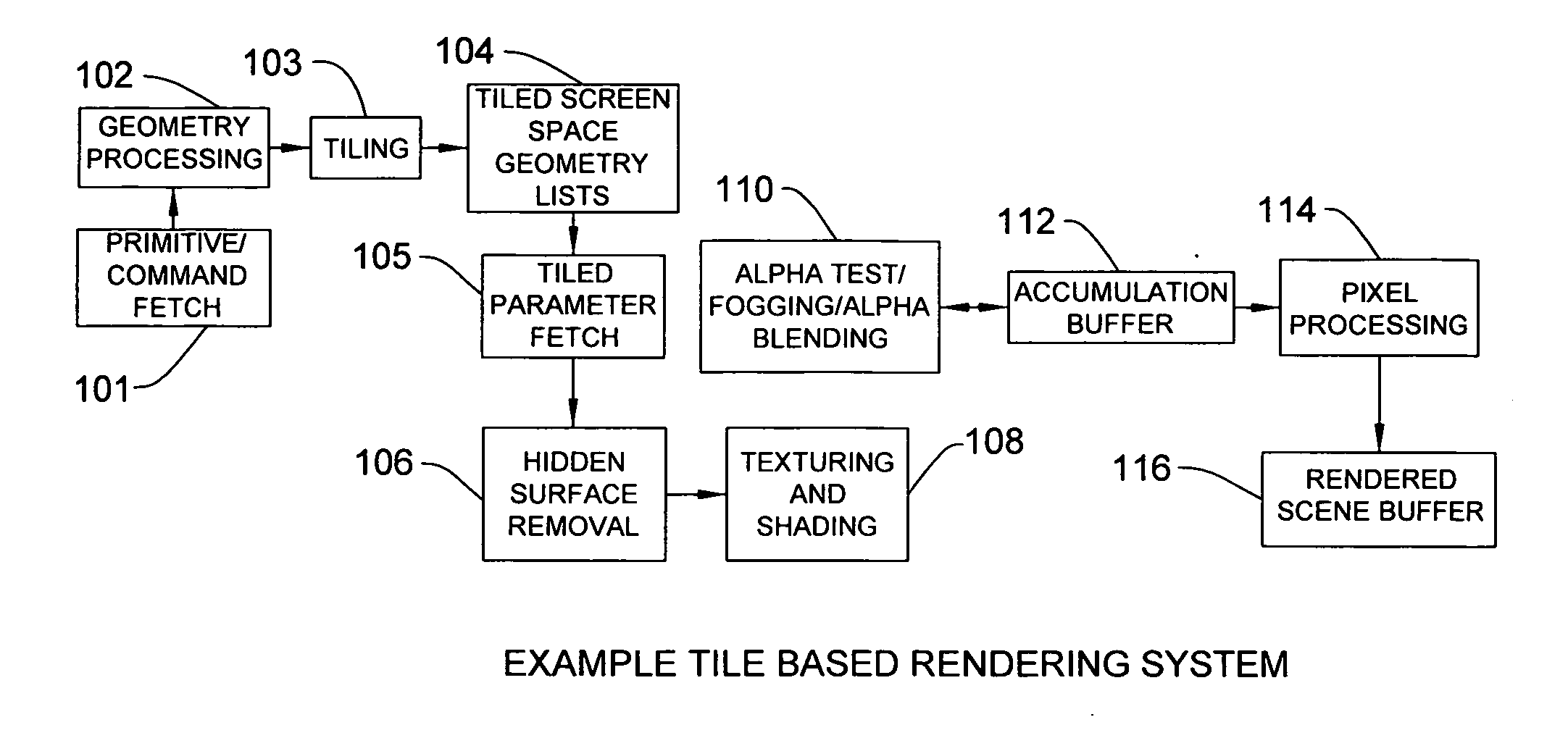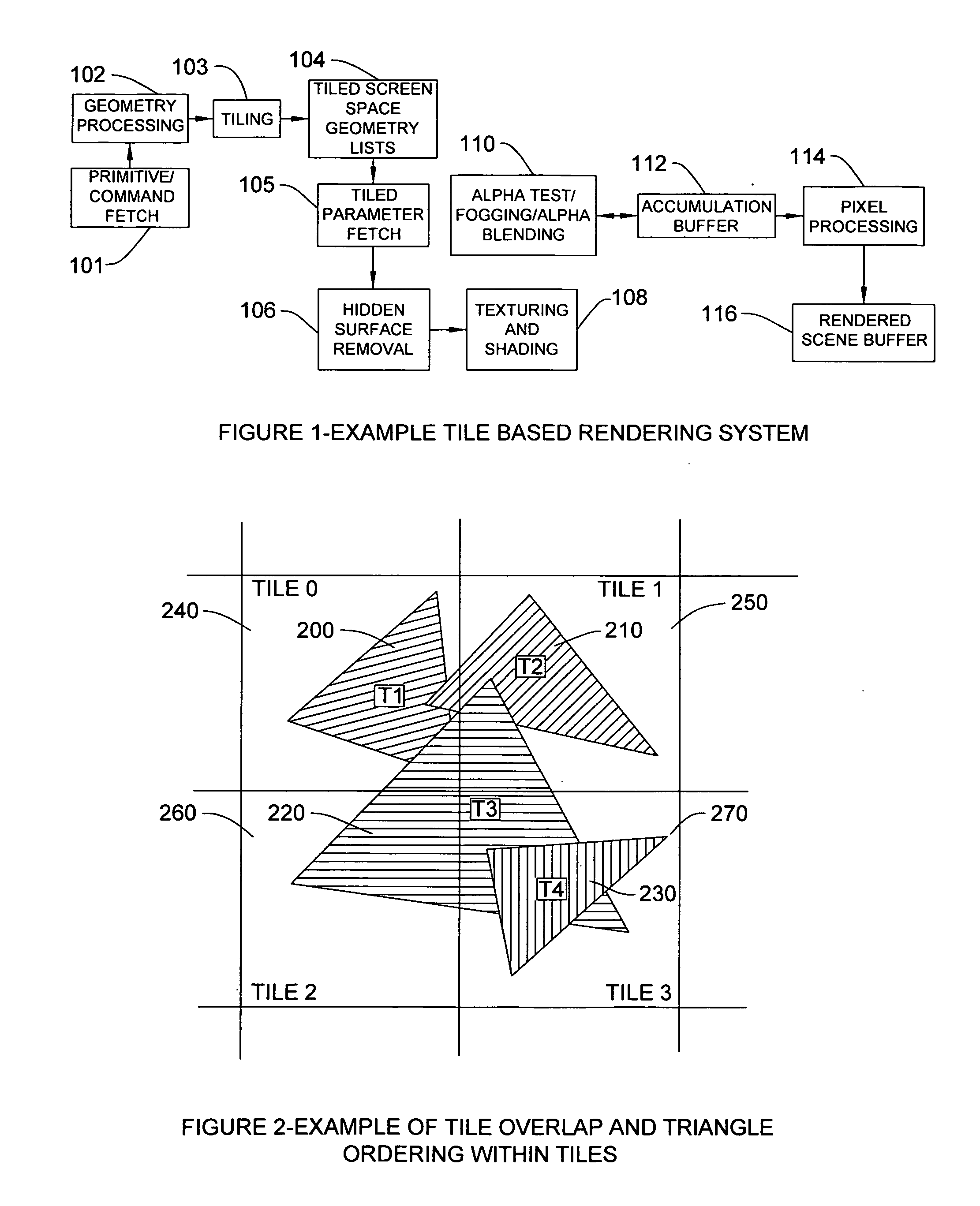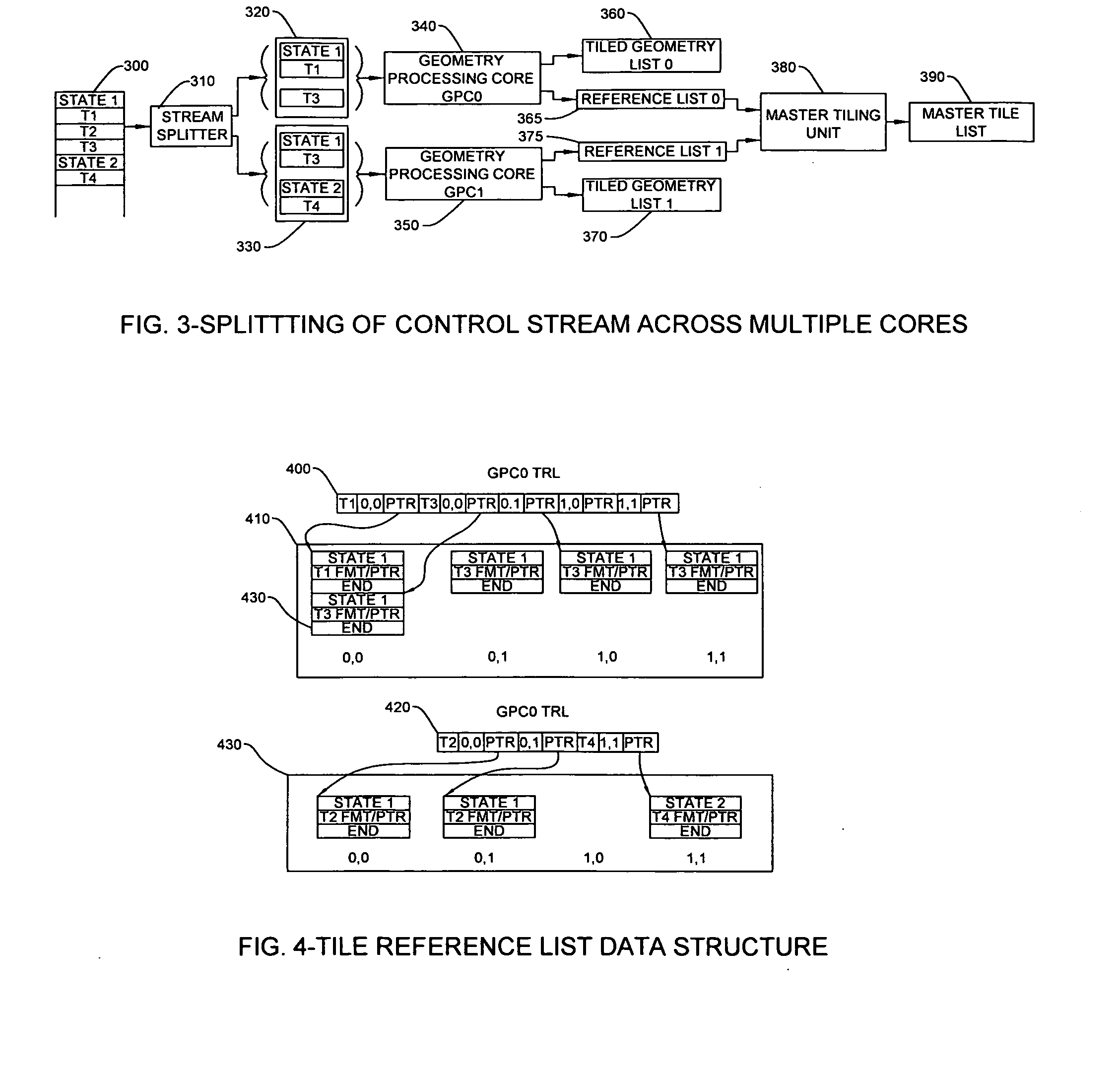Multi-core geometry processing in a tile based rendering system
a tile based rendering and multi-core technology, applied in image data processing, image data processing details, architectures with multiple processing units, etc., can solve the problems of not taking into account the scaling geometry processing issue, and it is difficult to achieve this in either a timely or cost-effective manner
- Summary
- Abstract
- Description
- Claims
- Application Information
AI Technical Summary
Benefits of technology
Problems solved by technology
Method used
Image
Examples
Embodiment Construction
[0023]FIG. 3 illustrates a simplified version of the proposed system using a master tiling unit to combine the geometry lists. In order to process incoming geometry stream 300 across multiple cores, the geometry stream 300 must first be split into separate streams, one per core by a stream splitter 310 which divides the data stream for processing across (in this example) the two geometry processing cores (GPC) 340 and 350. In this example, the incoming stream is distributed across the two cores in a simple round-robin basis. However, it is also possible to split the stream across the processing cores based on the processing load on each core. It is important to note that the stream splitter distributes control state as well as primitives to each geometry processing core. The control state contains information that instructs the hardware how to process the geometry data. For example, a matrix may be used to transform the geometry in a well known manner or details may be included rega...
PUM
 Login to View More
Login to View More Abstract
Description
Claims
Application Information
 Login to View More
Login to View More - R&D
- Intellectual Property
- Life Sciences
- Materials
- Tech Scout
- Unparalleled Data Quality
- Higher Quality Content
- 60% Fewer Hallucinations
Browse by: Latest US Patents, China's latest patents, Technical Efficacy Thesaurus, Application Domain, Technology Topic, Popular Technical Reports.
© 2025 PatSnap. All rights reserved.Legal|Privacy policy|Modern Slavery Act Transparency Statement|Sitemap|About US| Contact US: help@patsnap.com



